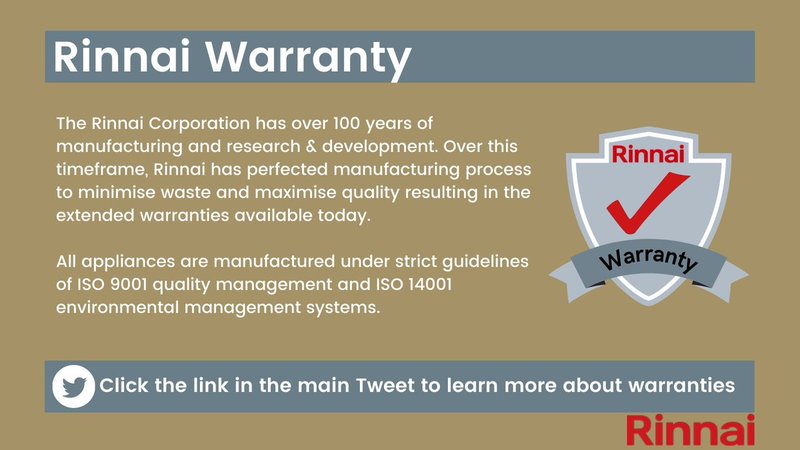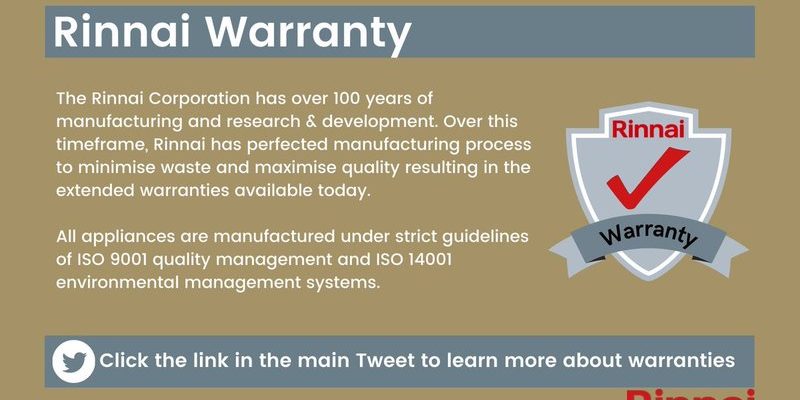
Let me explain. Rinnai water heaters come with warranties that cover specific parts and defects, but they expect you to play by the rules—like following installation instructions or using original parts. If you ignore these guidelines, you might accidentally break the warranty terms, and then you’re on your own if the heater misbehaves. So, understanding how to avoid voiding your Rinnai water heater’s warranty can save you stress and money down the road.
Understand What the Rinnai Warranty Actually Covers
Before diving into what can void your warranty, it helps to know what the warranty covers. Rinnai typically offers coverage for parts like heat exchangers, burners, and electronics, often ranging from 5 to 12 years depending on the model. But this isn’t a free-for-all guarantee—there are clear limitations and conditions.
For example, the warranty generally doesn’t cover damage caused by improper installation, lack of maintenance, or unauthorized repairs. Imagine buying a new phone but dropping it repeatedly; despite the warranty, accidental damage isn’t protected. With Rinnai water heaters, the same idea applies. If you hire someone unqualified to install or fix your heater, or if you skip routine flushing and care, you could lose warranty protection.
So, the first step in protecting your warranty is to read and understand the warranty booklet that comes with your unit. It’s like reading the manual before assembling IKEA furniture—it saves you a lot of hassle. You’ll see what Rinnai expects and what triggers voiding the warranty.
Always Use Qualified Professionals for Installation and Repairs
You might be tempted to install or fix your water heater yourself, especially if you’re handy around the house. Honestly, it’s tempting—who doesn’t love a good DIY moment? But here’s the thing: improper installation or repairs done by unlicensed technicians are the quickest way to void your Rinnai warranty.
Rinnai insists on certified installers because their water heaters involve gas connections, electrical wiring, and precise calibration. If one of these steps is missed or done incorrectly, it could cause leaks, inefficiency, or even hazards like carbon monoxide leaks. Not only does this risk void your warranty, but it also risks your home and family’s safety.
When you call a professional, they’ll also properly sync the system controls and ensure everything is set up according to Rinnai’s specifications. That includes making sure remotes or control panels are correctly connected. Using the authorized installer means you keep warranty coverage intact and get peace of mind.
Use Only Genuine Rinnai Parts and Accessories
You might notice replacement parts or accessories that look similar to Rinnai’s but come from third-party sellers. It’s tempting to save a few bucks by buying those universal parts or generic remotes. But beware: using non-genuine parts is a classic warranty killer.
Why? Because Rinnai designs their parts to work seamlessly with their heaters. An aftermarket battery, remote, or thermostat might not sync correctly, causing unexpected errors or malfunctions. When your system detects these “foreign” parts, the internal code often flags a warranty violation.
For example, replacing the original remote with an off-brand one might cause syncing or reset problems—you’d think replacing a battery is simple, but with Rinnai’s advanced electronics, it’s more complicated than that. Always buy parts directly from Rinnai or authorized dealers. It’s a bit like choosing the right puzzle pieces—you want a perfect fit, not forcing something that breaks the whole picture.
Perform Regular Maintenance According to Rinnai’s Guidelines
Here’s another thing people overlook: routine maintenance. You might think, “It’s working fine; why bother?” But skipping maintenance can cause buildup inside the heater, reduce efficiency, and eventually lead to failure. Worse, the warranty often requires you to keep up with maintenance tasks to remain valid.
Rinnai recommends flushing the system once a year to clear sediment and minerals from the water lines. You can’t just skip this because flushing keeps parts like the heat exchanger in good shape. Neglecting this task is like never oiling a car engine—the parts wear out faster.
If your heater breaks down because you ignored maintenance, Rinnai can reject any warranty claim, saying damage arose from neglect. So, schedule yearly checkups, and keep proof of service visits. This paperwork can be a lifesaver if you ever need to file a claim.
Avoid Unauthorized Modifications or Tampering
You might be curious about tweaking your water heater for better performance or adding features—after all, everyone loves custom setups. But here’s a rule you don’t want to break: don’t modify or tamper with your Rinnai water heater in any way that’s not approved by the manufacturer.
This means no hacking the control board, bypassing safety switches, or installing unapproved software updates. Even adjusting the factory-set temperature limits beyond the recommended range could void your warranty.
Why? Because Rinnai engineers test and certify their heaters to strict safety and efficiency standards. When you modify it, you risk creating unsafe conditions or damaging sensitive electronics. Plus, the warranty terms explicitly state unauthorized modifications lead to loss of coverage.
If you’re unsure about an upgrade or need troubleshooting help, always contact Rinnai support or an authorized technician. They can guide you without jeopardizing your warranty.
Keep Your Warranty Information and Proof of Purchase Safe
Sounds simple, but you’d be surprised how often people misplace their warranty documents or proof of purchase. When it’s time to file a claim, you’ll need those papers to prove your unit is covered.
Think of it like an insurance card—you need it when something goes wrong. Losing your warranty booklet or sales receipt can delay or completely invalidate your claim.
So, as soon as you buy your Rinnai water heater, scan or photocopy the warranty information and sales receipt. Store those files in a safe, easy-to-find spot. Many people keep them in a dedicated folder or digitally on cloud storage.
Pro tip: Register your water heater with Rinnai online if the option is available. That added step often simplifies claim processing.
How Remote Controls Affect Your Warranty
Rinnai water heaters often come with remote controls that let you adjust temperatures from a distance. You might wonder, “Can swapping the remote or changing batteries affect my warranty?”
Here’s the truth: using the original Rinnai remote is part of the warranty conditions. Installing third-party remotes, or messing up the pairing process, can cause syncing errors or reset failures that might damage the system’s control board.
Even replacing batteries isn’t as simple as swapping in any AA cells. Rinnai recommends specific battery types to ensure consistent power and prevent corrosion inside the remote. Using incorrect batteries can cause the remote to malfunction, which could indirectly lead to warranty issues.
If your remote acts up, try resetting or re-pairing it according to Rinnai’s instructions before replacing it. If problems persist, contact an authorized dealer rather than experimenting with unsupported fixes.
“Treat your water heater’s remote like a delicate conversation—it must be paired and synced just right to keep everything running smoothly.”
Wrapping It Up Without Voiding Your Rinnai Warranty
Honestly, protecting your Rinnai water heater’s warranty isn’t rocket science, but it does require attention to detail and playing by the rules. Use certified installers, stick with genuine parts, keep up maintenance, and avoid DIY hacks that can backfire. Remember, the warranty is there to protect you, but only if you treat your water heater the way Rinnai recommends.
If you take care of your heater like you would your favorite gadget—gently, with the right parts and occasional checkups—you’re setting yourself up for years of worry-free hot water. And that’s a small price to pay to avoid the expensive surprise of a voided warranty. So, next time you think about skipping a step or quick-fixing your Rinnai, remember: a little patience goes a long way toward keeping your coverage intact.
